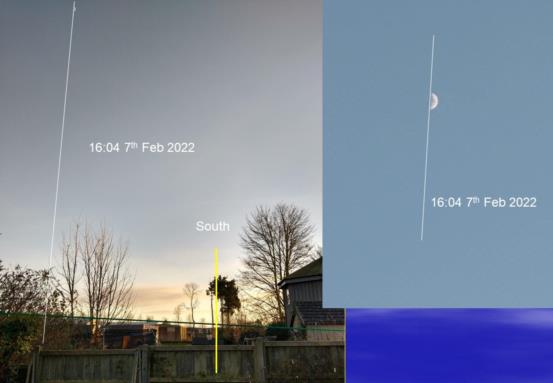
NavList:
A Community Devoted to the Preservation and Practice of Celestial Navigation and Other Methods of Traditional Wayfinding
From: David Pike
Date: 2022 Feb 11, 13:31 -0800
Frank
As a paid up and practising lunatic since last weekend, I don’t disagree with you at all, but there’s one point I’d like to make to help avoid confusion. When the meaning isn’t obvious, I think it’s important to always state which north or south the writer is talking about, because they could mean N & S on the celestial sphere, N & S on the observer’s horizon, and one I hadn’t heard of before N & S on the Ecliptic. The reason I mention this is the large amount of copying and pasting which goes on with ‘blogs’ on the w.w.w. The trouble is, statements on astronomical blogs get transferred, often précised and with caveats removed, onto survival blogs where readers are usually only interested in the direction of points on their visual horizon. Early last weekend the Moons horns were pointing close enough to south on my visual horizon at 53N for long enough to be of practical use to me. However, by PM on Monday 7th*, the attached photographs taken from my garden show that whilst the line of the Moon’s horns might be good for an astronomer who understands what they’re looking at, the line can’t always be relied upon by a traveller in the wilderness at night wanting to know where south is on their visual horizon. I can’t remember now exactly which azimuth the line cut the horizon. It was somewhere between 150 and 160 DaveP
* Times were UT, and my position was 53 10'N 000 32'W







